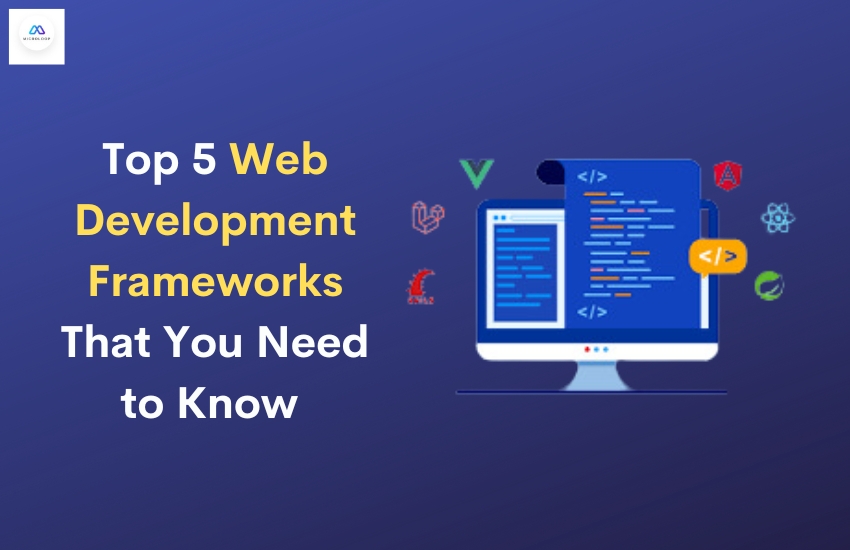
Close


Many developers use the web development framework at the time of building a website. However, it's essential to consider various factors when developing a website; you need to keep in mind that choosing the best development framework is crucial.
Before selecting the best web development framework, there are specific steps you need to accomplish.
Before that, you also need to understand the best web development framework. In this blog, we will delve into the types of web development frameworks and the top trending frameworks in 2023 that will definitely take your business to the next level.
Let's get started!
A web development framework, also known as a web application framework, is a tool that helps a developer throughout the process of building web products. This web development framework consists of built-in libraries that simplify the work of developers. These libraries offer users a wide array of features, functions, and processes that save their valuable resources and time.
This will automatically help developers to create web applications with ease. Different web products can be built using web development frameworks such as web services, web apps, and web APIs.
By utilizing the use of existing web development frameworks, developers can reuse the code and standardize the important part of the development process. This will not only help developers make the app-building process faster but also enhance its efficiency.
To conclude, the web development framework plays a very crucial role in building successful web app development projects.
The framework that is used to handle the user side of the applications. The motive here is to enhance the user experience, making websites and applications easy to use and tailored to meet their needs. With a front-end development framework, you can develop applications and websites that have user-friendly graphical user interfaces.
The framework consists of more than just libraries of modules and tools. It provides developers with the tools needed to create website structures. The backend framework consists of a server, database, and the code that facilitates communication with them. They simplify web development tasks such as URL routing, database interaction, push notifications, enhanced security, and much more. It ensures that the website functions smoothly in the background.
jQuery framework has opened a lot of opportunities for developers to build robust web applications with the help of its rich set of features. This JavaScript library simplifies the interaction between HTML elements and JavaScript code.
It helps in CSS animations, event handling, making web pages more interactive, and adheres to SEO-friendly practices. Let's explore its key features:
Facebook introduced React in 2013 and has gained immense popularity in the web development industry. It is an open-source JavaScript library used to build interactive user interfaces that would entice developers to front-end development. React is everyone's favorite choice because of its learning features and flexibility. Moreover, it offers excellent SEO support compared to other frameworks. Key features of React are:
This web development framework, launched in 2011, is considered one of the most productive open-source Javascript frameworks, utilizing the MVVM paradigm. Its major advantage is that it is designed to maximize developer productivity by incorporating JS best practices in the core design. Key features of Ember are:
With the help of templates, Ember.js automatically updates the model whenever the content of the application changes.
An open-source Python-based back-end development framework that has been immensely popular among developers and enterprises that makes it easier for them to develop complex, highly scalable, and data-driven web applications. The framework is designed for engineers and offers features like naive GraphQL integration. Key features are:
Google introduced AngularJS, an open-source JavaScript framework that enables the development of high-performance, large-scale Javascript-based applications. This makes it one of the most popular frameworks among developers to be used.
With a robust set of features and the ability to work with cross-platform and client-side frameworks, Angular applications run smoothly on desktop and mobile applications. The key features of AngularJS are:
Key Takeaways
To sum up, web development framework provides developers with libraries and frameworks that facilitate the development of apps or websites that they are working on.
Web framework is divided into two parts: front-end and back-end frameworks. These components play a significant role in making websites attractive to users and generating potential leads.
Microloop IT Solution, USA, provides the perfect web development framework solutions for your business to improve security and reliability, optimized for performance and scalability, and streamlined development.